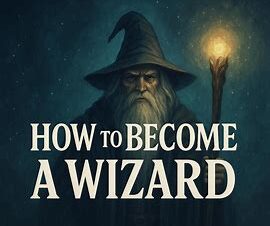“The Scientific Revolution — Wizards of Reason and Discovery”
🎯 Learning Objectives
By the end of this lecture, you should be able to:
- Explain how the Scientific Revolution grew out of Hermetic and alchemical traditions.
- Identify major “wizard-scientists” such as Copernicus, Kepler, Galileo, and Newton.
- Describe how observation and experimentation became the new magic of the age.
- Recognize the tension between faith, reason, and imagination during this period.
- Apply the Indigo Wizard’s approach to unite science and spirit rather than divide them.
📜 Lecture Script
1. The Torch Passes
The 1600s CE: the old world trembles.
Alchemy’s crucibles have become laboratories, and the astrologer’s charts evolve into the astronomer’s tables.
The Hermetic dream of order still guides humanity, but now through measurement and mathematics.
The wizard’s cloak gives way to the scholar’s robe, yet the mission remains unchanged: to read the language of creation.
2. Nicolaus Copernicus — The Sun-Centered Vision
In 1543, Copernicus publishes De Revolutionibus Orbium Coelestium.
He dares to suggest that Earth itself moves around the sun.
The revelation overturns centuries of doctrine; humanity is no longer the universe’s fixed center.
To Copernicus, the cosmos is not chaos but harmony. He writes,
“The motions of the heavenly bodies are like a symphony.”
The wizard recognizes this as a return to the Pythagorean “music of the spheres”—science rediscovering its magical roots.
3. Johannes Kepler — The Mathemagician
Kepler (1571–1630) inherited Copernicus’s dream and clothed it in mathematics.
He discovered that planets move in ellipses, not perfect circles. Their speeds vary by distance from the sun—a divine geometry of motion.
Kepler called the universe “a sacred geometry built by God.”
He calculated with reason but worshiped with awe—a true scientific wizard who blended number and reverence.
4. Galileo Galilei — The Seer through Glass
Galileo (1564–1642) turned a simple tube of glass into a telescope and aimed it at the heavens.
He saw mountains on the Moon, moons around Jupiter, and spots upon the Sun.
When authorities demanded silence, Galileo whispered, “Eppur si muove”—And yet it moves.
In him, the wizard’s courage reappears: to speak truth though powers forbid it.
For Indigo Wizards, Galileo represents disciplined perception—the courage to see rather than merely believe.
5. Francis Bacon — The New Method
Across the Channel, Francis Bacon (1561–1626) proposed a “new organon,” a new instrument of knowledge: inductive reasoning.
Instead of accepting tradition, one must observe, test, and build knowledge from evidence.
This is wizardry redefined as methodical enchantment—spells replaced by experiments, incantations by hypotheses.
Bacon’s vision seeded the scientific method itself.
6. Isaac Newton — The Final Magus
Newton (1643–1727) unified heaven and earth through mathematical law.
His Principia Mathematica revealed that the same force that pulls an apple downward holds the Moon in orbit.
But Newton’s notebooks tell another story: he also studied alchemy and prophecy, searching for divine design within nature’s code.
To him, equations were hymns to the Creator.
Thus ends one age and begins another: wizardry reborn as modern science.
7. The Alchemy of Mind and Matter
While scientists formalized reason, artists and mystics preserved imagination.
Both currents fed each other: invention inspired art, and art humanized invention.
- The telescope expanded vision outward.
- The microscope expanded vision inward.
- Printing spread knowledge across continents.
The wizard of this era learns that truth requires instruments—tools of precision guided by moral clarity.
8. The Indigo Wizard’s Reflection
For the Indigo Wizard, the Scientific Revolution demonstrates the unity of inner and outer exploration.
- Observation = Mindfulness.
- Hypothesis = Intention.
- Experiment = Practice.
- Conclusion = Wisdom.
When we test reality through honest inquiry, we perform a sacred act.
Science and magic differ only in language; both seek pattern, both demand discipline, both require humility before the unknown.
9. Lessons for Modern Wizards
- Seek evidence without losing wonder.
- Question authority but honor truth.
- Balance rational analysis with ethical awareness.
- Use knowledge to heal, not dominate.
- Remember that each discovery is also a revelation of self.
The Indigo Wizard’s laboratory is both the physical world and the mind itself.
10. Reflection Exercise
In your journal, answer:
- Which figure—Copernicus, Kepler, Galileo, Bacon, or Newton—best embodies your idea of a modern wizard? Why?
- How do you apply experimentation and observation in your own learning or spirituality?
- Write a short affirmation beginning: “My inquiry is sacred because…”
11. Closing Meditation
Imagine standing beneath a vast night sky. The stars wheel in silent majesty.
Before you rests a telescope—a symbol of clarity. Behind you burns a candle—a symbol of spirit.
You gaze through the lens and whisper:
“The universe within me beholds the universe beyond me.”
Let that awareness merge—scientist and mystic, reason and wonder—until they are one.
*(continued in Lecture 2 Part 8: The Age of Enlightenment — Reason, Reform, and the Wizard’s Code of Ethics)
📚 References
- Francis Bacon, Novum Organum, 1620.
- Nicolaus Copernicus, De Revolutionibus Orbium Coelestium, 1543.
- Johannes Kepler, Harmonices Mundi, 1619.
- Isaac Newton, Principia Mathematica, 1687.
- Zell-Ravenheart, Oberon. Grimoire for the Apprentice Wizard, New Page Books, 2004.
- Grey School of Wizardry www.greyschool.net
